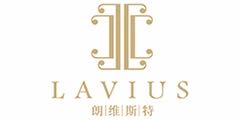
Privacy statement: Your privacy is very important to Us. Our company promises not to disclose your personal information to any external company with out your explicit permission.


In museums, lighting design is a very important part. There are many types of exhibits that are sensitive to light. For such exhibits, excessive lighting is a kind of damage.
Textiles, paper, dyed leather, animal feathers, grass, plant pigments, animal and plant specimens, layout sketches, etc. are particularly sensitive to light, so there is hardly any natural light in the exhibition room where such exhibits are displayed.
Light pollution, in a broad sense, refers to the adverse effects of excessive light on the production environment and living environment of human beings. Mainly include the harm of visible light and the harm of invisible light. The chandelier needs to be customized, and the height and width are limited.
1. Visible light hazard: Visible light refers to electromagnetic waves with a wavelength between 380nm-780nm. Mainly include strong light hazard, laser hazard, light hazard, visual hazard, etc.
2. Invisible light hazards: Invisible light refers to electromagnetic waves with a wavelength less than 380nm or greater than 780nm. Mainly refers to the harm of ultraviolet and infrared rays.
Customized chandeliers, as far as the museum display area is concerned, mainly include: the harm of light radiation to exhibits, the adverse effects of light on human activities, and the light pollution caused by excessive light radiation on the space environment.
Therefore, for museums, lighting design without light damage must be carried out.

Privacy statement: Your privacy is very important to Us. Our company promises not to disclose your personal information to any external company with out your explicit permission.

Fill in more information so that we can get in touch with you faster
Privacy statement: Your privacy is very important to Us. Our company promises not to disclose your personal information to any external company with out your explicit permission.